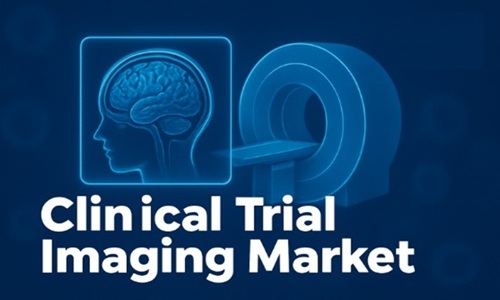
Understanding the Aftermath of a Car Accident
Being involved in a car accident can turn your life upside down in an instant. From medical bills and lost wages to dealing with insurance adjusters, the process of filing a claim is often overwhelming. In Augusta, residents face unique considerations when navigating Georgia’s legal system, which makes knowing where to turn for help crucial.
This guide provides practical advice for accident victims in Augusta, explaining what to do after a crash, how to protect your rights, and where to find reliable legal support.
Immediate Steps to Take After an Accident
Ensure Safety First
Move vehicles out of traffic, if possible.
Check for injuries and call emergency services.
Document the scene with photos and notes.
Report the Accident
In Georgia, you must report any accident that involves injury, death, or property damage exceeding $500. Calling law enforcement ensures there is an official report, which is critical for insurance and legal claims.
Exchange and Collect Information
Names, phone numbers, and addresses of all parties.
Insurance details.
Contact information for witnesses.
Having thorough documentation helps build a strong foundation for your claim later.
Why Legal Help Matters in Augusta
While some minor fender-benders may be resolved directly through insurance, accidents that involve injuries, disputed liability, or significant damages often require professional legal guidance. An attorney can:
Negotiate with insurance companies.
Ensure deadlines for filing are met.
Help calculate the true value of damages, including future medical needs.
Represent you if your case goes to trial.
Augusta’s legal professionals have the advantage of knowing local courts, judges, and insurance adjusters, which can make a significant difference in case outcomes.
Navigating Georgia’s Car Accident Laws
Comparative Negligence in Georgia
Georgia follows a “modified comparative negligence” rule. This means if you are found partly at fault for the crash, your compensation will be reduced by your percentage of fault. However, if you are 50% or more responsible, you cannot recover damages.
Statute of Limitations
Under Georgia law, you generally have two years from the date of the accident to file a personal injury claim. Property damage claims must be filed within four years. Missing these deadlines can bar you from seeking compensation altogether.
For a comprehensive overview of Georgia-specific accident regulations, you can refer to state-specific car accident laws.
Insurance Company Tactics to Watch Out For
After a crash, many people assume their insurance provider—or the other driver’s insurer—will pay out fairly. Unfortunately, this is rarely the case. Insurers often try to minimize payouts by:
Offering quick settlements before the full extent of injuries is known.
Downplaying medical expenses or claiming treatment was unnecessary.
Using recorded statements against you.
Delaying responses to pressure you into accepting less.
An experienced lawyer can recognize these tactics and counter them effectively, ensuring you do not accept less than you deserve.
Local Legal Resources in Augusta
Augusta is home to respected law firms and legal organizations that specialize in accident cases. Victims should seek firms with a proven track record of success and strong client reviews. For example, John Foy & Associates is well-known in Georgia for its commitment to helping accident victims.
These resources can guide you through the legal process, from filing claims to negotiating settlements or going to court if necessary.
The Process of Filing a Claim in Augusta
Step 1: Notify Your Insurance Company
Promptly report the accident to your insurer, providing only the facts. Avoid speculating about fault until you have spoken to an attorney.
Step 2: Seek Medical Evaluation
Even if you feel fine, get checked by a doctor. Injuries like whiplash or internal trauma may not show symptoms right away. Medical records will also serve as vital evidence.
Step 3: Consult with an Attorney
A skilled lawyer can explain your options and take over communication with insurers, freeing you from stress while you focus on recovery.
Step 4: Evidence Gathering
Lawyers often work with investigators to collect:
Police reports.
Witness statements.
Medical evaluations.
Expert testimony, if needed.
Step 5: Negotiation and Resolution
Most claims are settled outside of court. If negotiations fail, your attorney can file a lawsuit and represent you at trial.
Common Mistakes to Avoid After a Crash
Many accident victims unintentionally weaken their cases. Avoid these missteps:
Admitting fault at the scene.
Posting accident details on social media.
Accepting the first settlement offer without legal advice.
Delaying medical treatment.
Each of these can harm your ability to secure fair compensation.
Local Support for Victims and Families
Recovering from a crash is not only about financial compensation—it is also about emotional and physical healing. Augusta offers resources such as:
Rehabilitation centers for accident-related injuries.
Counseling services for trauma recovery.
Community support groups for victims and their families.
Knowing where to find these resources can make the recovery process smoother.
Finding the Right Lawyer in Augusta
When selecting an attorney, consider:
Experience: How many car accident cases have they handled?
Local Knowledge: Familiarity with Augusta courts and procedures.
Reputation: Client testimonials and peer reviews.
Fee Structure: Many personal injury lawyers work on a contingency basis, meaning they only get paid if you win.
Taking the time to choose the right advocate can significantly impact the outcome of your case.
Final Thoughts
Filing a successful claim after a crash in Augusta requires knowledge of Georgia’s laws, awareness of insurance company tactics, and support from experienced legal professionals. By acting quickly, gathering evidence, and securing legal guidance, victims can protect their rights and increase their chances of receiving fair compensation.
If you are currently dealing with the aftermath of a crash, consider speaking to a local attorney who can guide you through the complexities of car accident claims in Augusta.

















